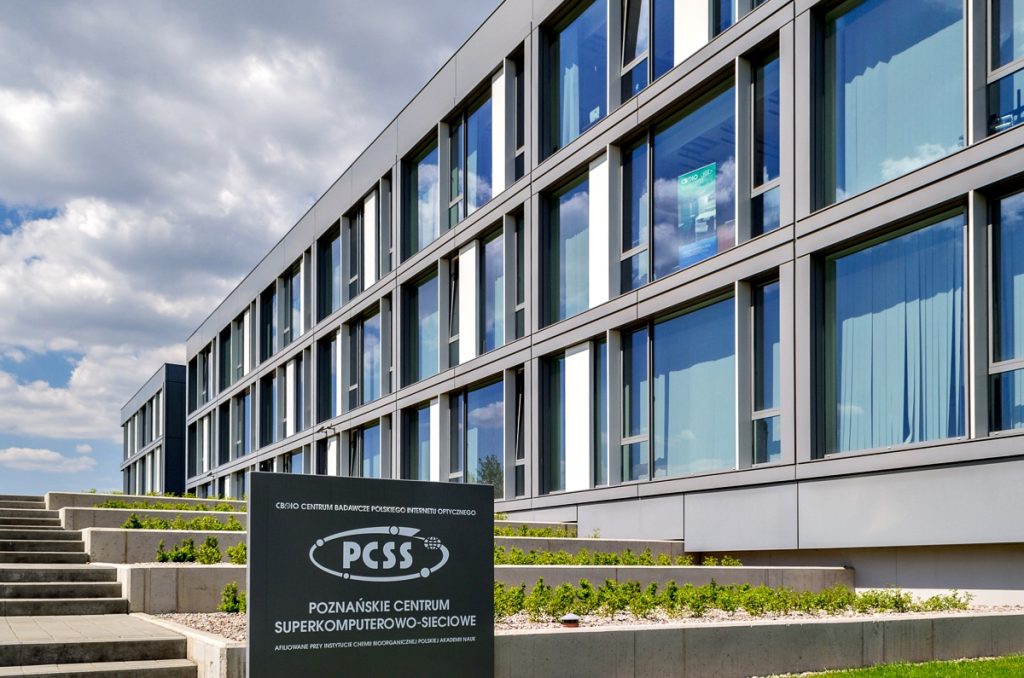Intel oneAPI Workshop
Serdecznie zapraszamy do udziału w szkoleniu Intel oneAPI Workshop, które odbędzie się w siedzibie Poznańskiego Centrum Superkomputerowo-Sieciowego przy ul. Jana Pawła II 10 w dniach 22 - 23 listopada 2023r.
Szkolenie jest anglojęzyczne.
- Agenda
- Speakers
- Miejsce
- Rejestracja
Day 1 - Programming with oneAPI
Day 2 - openMP offloading, LIBRARIES and VTUNE/ADVISOR
Offloading with FORTRAN Code – with Demos
Automatic offloading using DO CONCURRENTOffloading using OpenMP 5.2Offloading using oneMKL11:00Coffee break11:15Intel oneAPI Librairies oneDPL, oneTBB, oneMKL
Intel oneAPI libraries (oneMKL) for HPC - with demosPerformance optimized libraries for numerical simulations and other purposes12:00Profiling and analysing code performance with VTune
VTune main functionality (Hot spot analysis…) starting with CPU.Profiling Tools Interfaces for GPUProfile heterogenous SYCL/OpenMP Workloads with Intel VTune13:00Lunch break13:30Application profiling for CPU and mixed hardware with Intel Advisor
Advisor main functionality (Vectorization and Roofline) starting with CPUEstimate performance potential gains with Offload Advisor (CPU -> HW Accelerator)Analyse heterogenous SYCL/OpenMP Workloads with Intel Advisor and Roofline analysis14:30Hands-on labs on VTune / Advisor
Understand the basics of command line options in VTune Profiler to collect data and generate reports.Profile a SYCL* application using Intel® VTune™ Profiler on Intel® DevCloudRun Offload Advisor using command line syntax.Use performance models and analyze generated reports.See how Offload Advisor¹ identifies and ranks parallelization opportunities for offload.15:30Coffee break15:45Hands-on labs on code optimisation
Use OpenMP Offload directives to execute code on GPU.Use OpenMP constructs to effectively manage data transfers to and from the device17:00End of Day 2
Stephen Blair-Chappell
is an independent software consultant and is an Intel-certified oneAPI instructor. He was formerly the Technical Director at Bayncore where he led a team of consultants providing HPC and AI training on Intel Architecture. For 18 years he was a Technical Consulting Engineer at Intel helping their strategic customers in software optimization and code modernization. He is the author of the book “Parallel Programming with Intel Parallel Studio XE”.
Second Speaker
TBA

CBPIO – siedziba główna Poznańskiego Centrum Superkomputerowo-Sieciowego

Dojazd do budynku CBPIO (od strony ul. Berdychowo):
- wjazd główny
Od strony ul.Berdychowo, należy minąć budynki Politechniki Poznańskiej, jadąc wzdłuż brzegi rzeki ulicą Jacka Rychlewskiego docieramy do małego ronda przy budynku; stamtąd należy kierować się na kamienisty, specjalnie oznaczony parking dla gości, lub ulicą wewnętrzną wzdłuż budynku na zarezerwowane uprzednio miejsca postojowe dla gości. - transportem publicznym z Dworca Głównego PKP/PKS
Należy udać się na przystanek tramwajowy „Poznań Główny” i wybrać tramwaj nr 6 w kierunku MIŁOSTOWO (rozkład jazdy MPK). Należy wysiąść na przystanku „Baraniaka” (siódmy z kolei przystanek), przejść na drugą stronę ulicy Jana Pawła II w kierunku północnym, następnie przejść ulicą Jana Pawła II do budynku. - transportem publicznym z lotniska Ławica
Należy wybrać linię autobusową nr 59 (rozkład jazdy MPK), która dojeżdża do Dworca Głównego PKP/PKS. Stamtąd należy udać się na przystanek tramwajowy „Poznań Główny” i wybrać tramwaj nr 6 w kierunku MIŁOSTOWO (rozkład jazdy MPK). Należy wysiąść na przystanku „Baraniaka” (siódmy z kolei przystanek), przejść na drugą stronę ulicy Jana Pawła II w kierunku północnym, następnie przejść ulicą Jana Pawła II do budynku. - taksówką
Rekomendujemy wybór jednej z zarejestrowanych korporacji, np. (61) 8222-222, (61) 8519-519, (61) 8222-333. Prosimy nie wybierać taksówki bez uprzedniego zamówienia telefonicznego (taksówki stojące pod dworcem kolejowym są bardzo drogie)! Zalecamy skorzystać także z dedykowanych aplikacji zrzeszających transport samochodami osobowymi, jak iTaxi czy Uber . - carsharing
W mieście funkcjonuje kilka firm oferujących wynajem samochodów „na minuty”. Dokładne oferty firm znaleźć można na stronach operatorów oraz portalu miejskim: https://www.poznan.pl/carsharing/ - rowery miejskie
W Poznaniu działa także system Poznańskiego Roweru Miejskiego. Warunki korzystania z tej formy transportu opisane są w serwisie: https://poznanskirower.pl/
